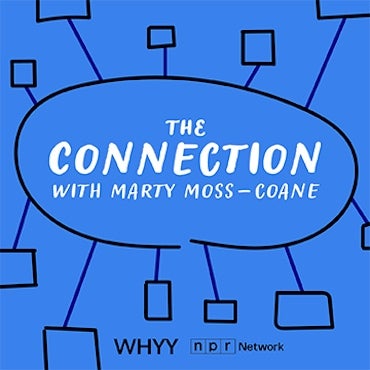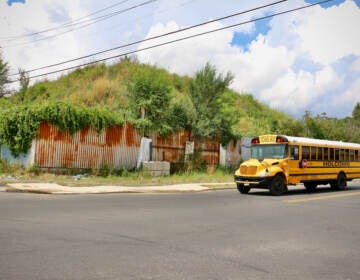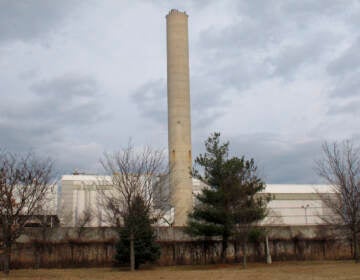Sun Ra kicks off a two-year jam for the love of Philly trees
The Sun Ra Arkestra inaugurated a two-year artistic project to engage city residents in the health and safety benefits of urban trees.
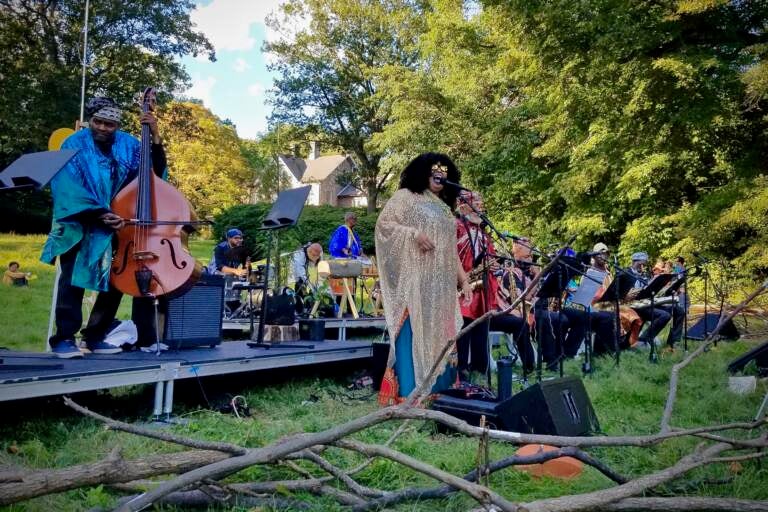
Singer Tara Middleton stands beside saxaphonist Marshall Allen in front of the Sun Ra Arkestra at Awbury Arboretum.(Peter Crimmins/WHYY)
On the last weekend in September, musicians of the Sun Ra Arkestra walked down a sloped meadow in Philadelphia’s Awbury Arboretum, toward a stage erected at the bottom in front of several hundred people who had spread out in the grass.
The famously intergalactic jazz band appeared to be delivering a message from outer space.
“Calling planet Earth! Calling planet Earth!” chanted Tara Middleton, the band’s vocalist.
The message of the concert, presented by Ars Nova Workshop and the Pennsylvania Horticultural Society, was to notice the trees. The performance and afternoon of related activities were part of “Summoning the Future Forest,” the inaugural event of a multi-year project by the Horticultural Society to engage the public in Philadelphia’s urban trees.
Called S(tree)twork, the project will be a series of artistic events and practices related to trees and the reforestation of Philadelphia. The end product will be a large-scale, built installation at Awbury Arboretum. What exactly that will be is still to be determined.
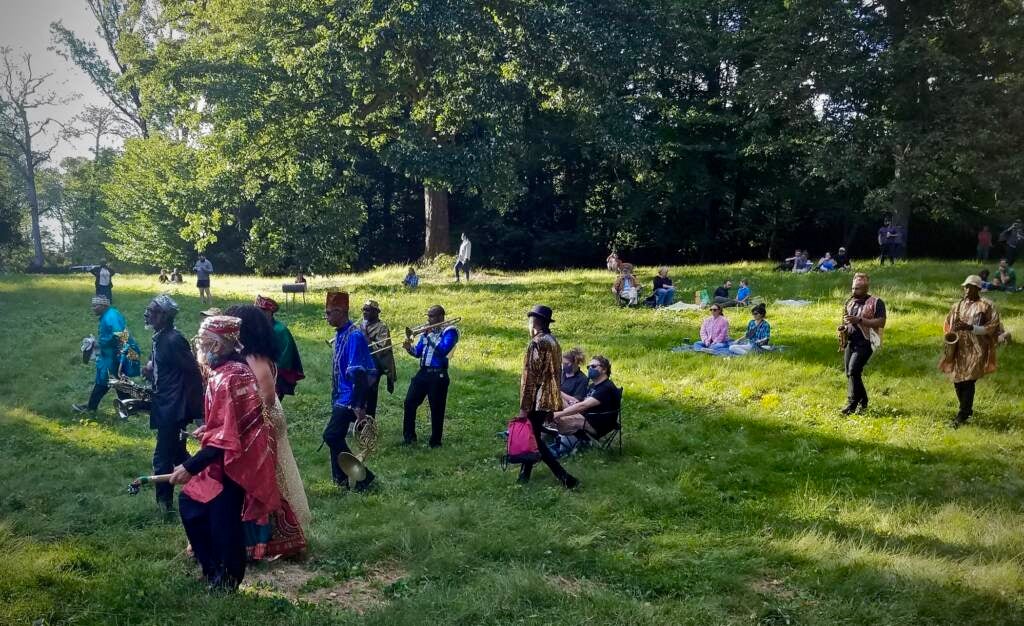
“We hope that it serves as a hub for the movement that we want to build, of people that want to reforest Philadelphia’s tree canopy,” said PHS’s director of Strategy, Planning and Partnerships, Casey Kuklick.
Philadelphia has traditionally forested areas in its parks and arboreta, but just as critical are the sidewalk and backyard trees in densely populated neighborhoods, which create a cooling effect during hot months, rainwater management in wet seasons, and beautification all year long.
Surveys show Philadelphia’s canopy is unequally distributed throughout its neighborhoods. Lower-income neighborhoods tend to have much fewer trees than wealthier and often whiter neighborhoods. Extreme heat kills more people each year than other natural events such as hurricanes and flooding; a leafy canopy can cool an overall neighborhood by more than 20 degrees.
Some studies show neighborhoods with more trees tend to have less crime.
PHS would like Philadelphia tree canopy to be at about 30%, said Kuklick. Currently it is at about 20%, and some neighborhoods have a canopy of only 2%.
Philadelphia’s Department of Parks and Recreation has a similar goal, and is currently working on developing a 10-year Philly Tree Plan to achieve it. PHS has been a partner in the development of that plan, which involved surveying more than 7000 Philadelphia residents about trees. A first draft of the plan is expected to be released this fall for public comment, with a final version expected next year.
S(tree)twork is not part of the Philly Tree Plan, but is meant to align with it.
PHS has a long-running Tree Tenders program, which works with neighborhood groups to plant and maintain trees in their neighborhoods. It also distributes backyard trees for free.
S(tree)twork has similar goals, but uses an artistic approach.
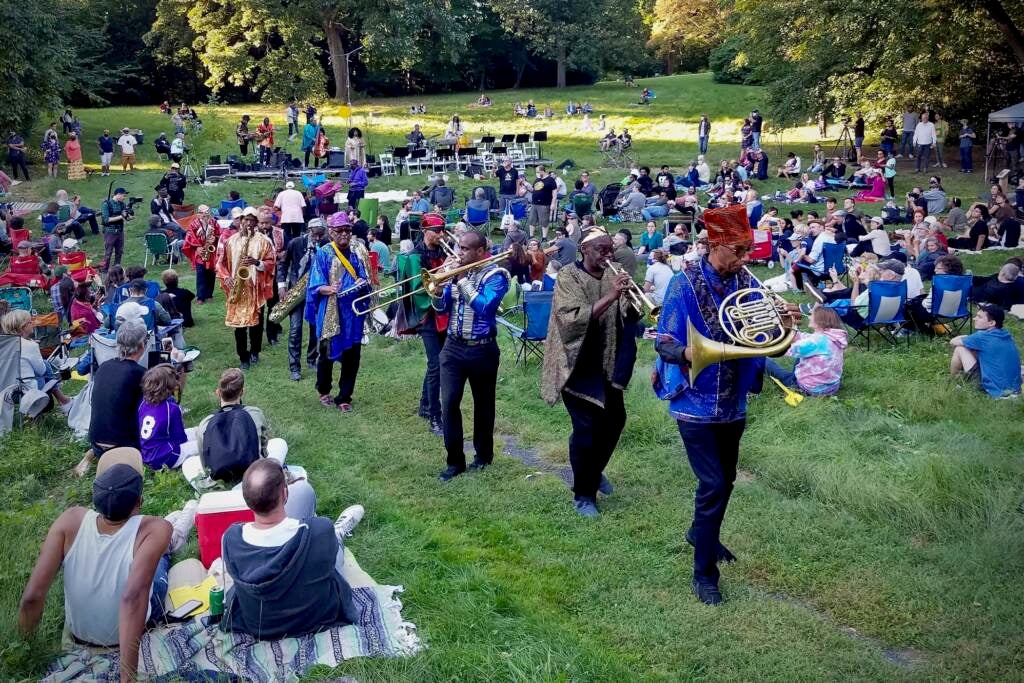
“That adds a visceral element of interest, to spark something in a bunch of people that we may not have been able to realize or understand,” said Kuklick. “This is, like, new forms of community engagement and new ways of connecting with people and talking about our work.”
“Summoning the Future Forest” featured art elements that had been developed in previous workshops. The logs of fallen trees were hollowed and cut with slits to make them more resonant, resulting in drumming performance. The sounds of the rings of Saturn, recorded by NASA, were manipulated into a sound installation emanating from the arboretum canopy. A printing press had been built as a portable cart, where participants could pick any leaf in the meadow and have it inked and pressed into a print, onsite.
One thing that the audience at Awbury Arboretum did not receive was a call to action about the importance of trees in their neighborhoods, or a pitch to get involved with PHS’s Tree Tenders. Unless they asked a PHS volunteer at the event, a casual audience member would not have known the concert was part of a public advocacy effort.
“We’re trying to work through poetics,” said S(tree)twork curator Marina McDougall. She said the event leaned into the artistic experience over didactic messaging, citing a quote from Sun Ra: “The real aim of this music is to coordinate the minds of people into an intelligent approach to the living future.”
McDougall brought in FutureFarmers to be the lead artists of S(tree)twork, a network of artists who have made community-oriented artistic interventions around the world. Working with a grant from the Pew Center for Arts and Heritage, the group will spend about two years devising art projects and work with community partners.
Ultimately they plan to create smaller projects that engage the public that build toward Awbury Arboretum installation.
“We need to find ways to bring other people into this conversation,” said McDougall. “We share all the incredible things the trees do: carbon sequestration, or the way that storm water is reduced through plantings, or shade for homes – that they serve as natural air conditioners. We use this kind of utilitarian language most of the time. But there is a way that art and culture can bring us into different kinds of understanding.”
McDougall said community groups have already started asking if the FutureFarmers projects, like the leaf printing press, could be brought to their neighborhoods.
Sharrieff Ali has been a Tree Tender with PHS for seven years, in the Maplewood section of Germantown. He said there is a need to shift people’s perspective on the importance of trees.
“We’ve been talking a lot lately about what’s called tree equity,” said Ali, referring to the imbalance of tree canopies being tied to historically racist redlining practices.
“We’re looking at educating folks and bringing in broader communities of people and using different tools,” he said. “One of the tools is to use creative programs around the arts and around people who are younger, more creative, and to interest them in the physical environment.”

Get daily updates from WHYY News!
WHYY is your source for fact-based, in-depth journalism and information. As a nonprofit organization, we rely on financial support from readers like you. Please give today.
